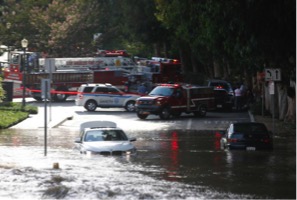The State of U.S. Drinking Water Infrastructure: Challenges and Solutions
Back in 2013, the American Society of Civil Engineers gave the U.S. drinking water infrastructure a troubling grade of "D." Many of our water systems are now reaching the end of their useful life, with some pipes dating back over a hundred years. In total, there are more than one million miles of water mains across the country, yet the condition of many remains unknown or deteriorating.
Impact With over 264 million people depending on this aging network, the consequences of failing infrastructure can be severe. When large water mains break, it can cause major disruptions in water supply, damage to homes and businesses, and even affect other essential services like power and transportation. But these major breaks are only part of the problem. Most water loss occurs quietly underground through smaller leaks that go unnoticed for long periods. According to the Water Research Foundation, utilities experience an average of 0.21 to 0.27 pipe breaks per mile each year. These failures not only waste water but also pose risks to public health and safety.
Costs The financial burden of maintaining and replacing this aging system is enormous. The American Water Works Association (AWWA) estimates that if every existing pipe needed to be replaced, the cost could exceed $1 trillion over the coming decades. Over the next 25 years, the total investment required for both drinking water and wastewater infrastructure could reach as high as $2 trillion. On top of that, around 250,000 water mains fail annually, and about 2 trillion gallons of water are lost due to leaks and breaks. A 2012 study by Utah State University found that repair costs for water utility incidents range from $6,000 to $7.5 million, with nearly half of those expenses tied to property damage claims.
Funding Crisis A major challenge facing the industry is a lack of adequate funding. According to ASCE, federal funding for water infrastructure has been declining. From 2008 to 2012, Congress allocated only $6.9 billion—roughly $1.38 billion per year—over five years. That’s just 8% of what the EPA identified as necessary over a 20-year period. With so little support, aging pipes continue to deteriorate, increasing the risk of major failures and putting communities at greater risk.
Solutions The Environmental Protection Agency (EPA) is working to improve the sustainability of the nation's water systems. One effective approach is to extend the life of existing infrastructure through rehabilitation rather than full replacement. HJ3 offers innovative solutions using carbon fiber technology developed at HJ3 Composite Technologies. Their CarbonSeal reinforcement systems help repair and strengthen aging pipes, significantly extending their service life while saving money compared to full replacement. Importantly, HJ3’s technology is approved for use in potable water systems, ensuring safety and compliance.
If you have an underground pipe that needs repair and want to learn more about how HJ3 can help, contact them today to discover a smarter, more cost-effective way to protect your water infrastructure.
â€

â€

â€
Function Switch,Window Lifter Switch,Window Regulator Switch,Power Window Regulator Switch
WENZHOU TIQNIU ELECTRICAL CO.,LTD. , https://www.tianqiuelectrical.com